Urban Development Institutions: Successful Case Studies
When they say "institutions of development of Russia," most often imply that in normal countries they are not needed. That cities and agglomerations develop the “invisible hand of the market”, that industries are created and formed independently. World experience shows that this does not work. Countries with strong economies like the UK, Argentina, China impose responsibilities on development institutions to transform depressed and undeveloped areas into spaces for people and businesses.
Let's look at the stages of the evolution of cities and several redevelopment cases involving development institutions.
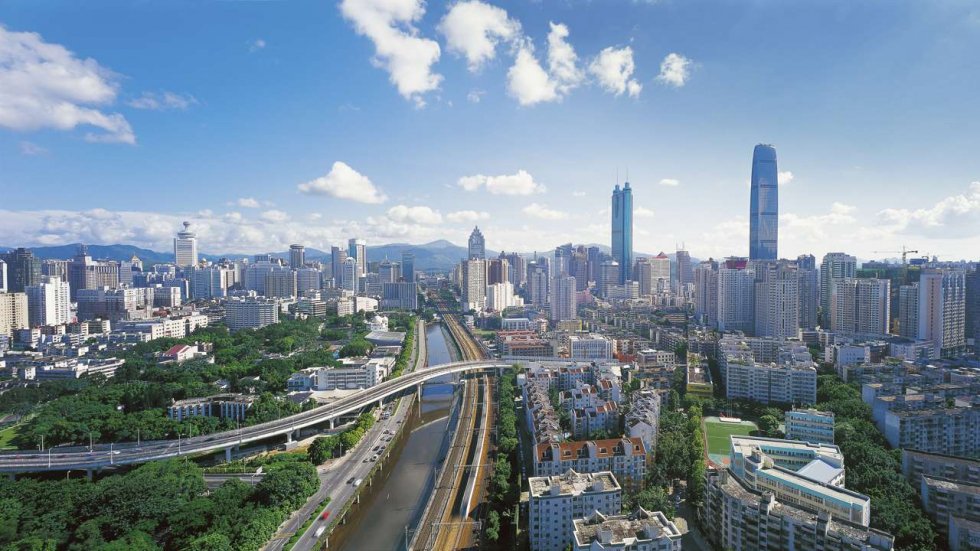
Shenzhen, China
Let's start with the theoretical component: the evolution of cities. Cities today account for 80% of gross domestic product. One of the reasons is lower transaction costs. That is, in the cities there are lower costs, which are not related to the production of products directly, but to the indirect costs associated with this production for collecting and searching all the information necessary for the activity, entering into various transactions, contracts, contracts, etc. The second important component of the "success" of cities: concentration of better human capital. Cities are the drivers of the global economy.
Cities go through certain stages of evolution:
 City 1.0 is a city-mechanism, which was perceived as a tool for living and working people. According to this principle, in the first half of the 20th century, French architect Le Corbusier offered to work with him. In its concepts of reconstruction of Paris, Moscow and other cities, it was based on the following structure: in the center of the city there are high (60 floors) office buildings; they are surrounded by parks and residential buildings. In 1930, he proposed a new concept for the Radiant City, in which he allocated separate spaces for the heavy industry zone, warehouses, light industry, park, residential, transport, business and others.
City 1.0 is a city-mechanism, which was perceived as a tool for living and working people. According to this principle, in the first half of the 20th century, French architect Le Corbusier offered to work with him. In its concepts of reconstruction of Paris, Moscow and other cities, it was based on the following structure: in the center of the city there are high (60 floors) office buildings; they are surrounded by parks and residential buildings. In 1930, he proposed a new concept for the Radiant City, in which he allocated separate spaces for the heavy industry zone, warehouses, light industry, park, residential, transport, business and others.
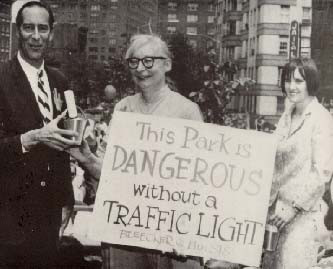 Industrialization logically led to the deterioration of the ecological status of all large cities. There were activists who wanted to change the emerging state of affairs. One of them was the Canadian-American writer, urban planning theorist and one of the founders of the new urbanism movement, Jane Jacobs . In the book The Death and Life of Large American Cities (1961), she described the basic principles of the economic functioning of cities and introduced the principle of urban import substitution. She formulated arguments against urban planning, guided by abstract ideas. The city can not ignore the daily lives of its inhabitants, it must be alive, diverse. It should be based on spontaneous order and various mechanisms of self-regulation. This concept of the city can be called "humanistic" and attributed to the City 2.0.
Industrialization logically led to the deterioration of the ecological status of all large cities. There were activists who wanted to change the emerging state of affairs. One of them was the Canadian-American writer, urban planning theorist and one of the founders of the new urbanism movement, Jane Jacobs . In the book The Death and Life of Large American Cities (1961), she described the basic principles of the economic functioning of cities and introduced the principle of urban import substitution. She formulated arguments against urban planning, guided by abstract ideas. The city can not ignore the daily lives of its inhabitants, it must be alive, diverse. It should be based on spontaneous order and various mechanisms of self-regulation. This concept of the city can be called "humanistic" and attributed to the City 2.0.
The next stage in the evolution of the city is City 3.0. We are talking about a developed civic initiative, global education, multiculturalism, international communication. The city becomes the center of knowledge and technology, and the role of industry in it is declining. For example, in London only 2% of the gross regional product is occupied by industry. Financial markets and the knowledge economy are coming to the fore.
Is it possible to go straight to the third stage, jumping over the second or even the first? How can you turn a small village into an agglomeration with a population of 10 million people? What organizations are needed to develop cities?
Let us dwell on the concept of " redevelopment ": this is one of the most effective ways of reprofiling (reassigning) unclaimed real estate objects or irrationally used territories. Redevelopment of cities and other territories may occur in different ways. It is possible to create centers of industry, museum clusters, business, tourism, transport, event and educational clusters.
At the end of the 20th century, the coastal area of the southern part of the Spanish city of Barcelona was occupied by the railway line, the industrial zone and the old fish market. In the XIX century, this area was the epicenter of the industrial revolution. Today, these areas are called "rusty belt." Due to industrial facilities that may no longer function, the area of cities increases, the efficiency of transport infrastructure decreases.
The money for the coastal reconstruction project, launched in 1990, was issued by the private-public corporation Nova Icaria Societat Anonima. At the first stage, investments amounted to 1.1 billion euros. Of these, 40% were provided by a municipal development company, 40% were invested by private development companies, and 20% by banks.
The result was 18 hectares of beaches with a total length of 4 kilometers, 50 hectares of parks, a walking boulevard 30 meters wide, 700 yacht marinas, two multifunctional towers 100 meters high and 2,000 apartments, as well as clubs, restaurants, cafes and hotels.
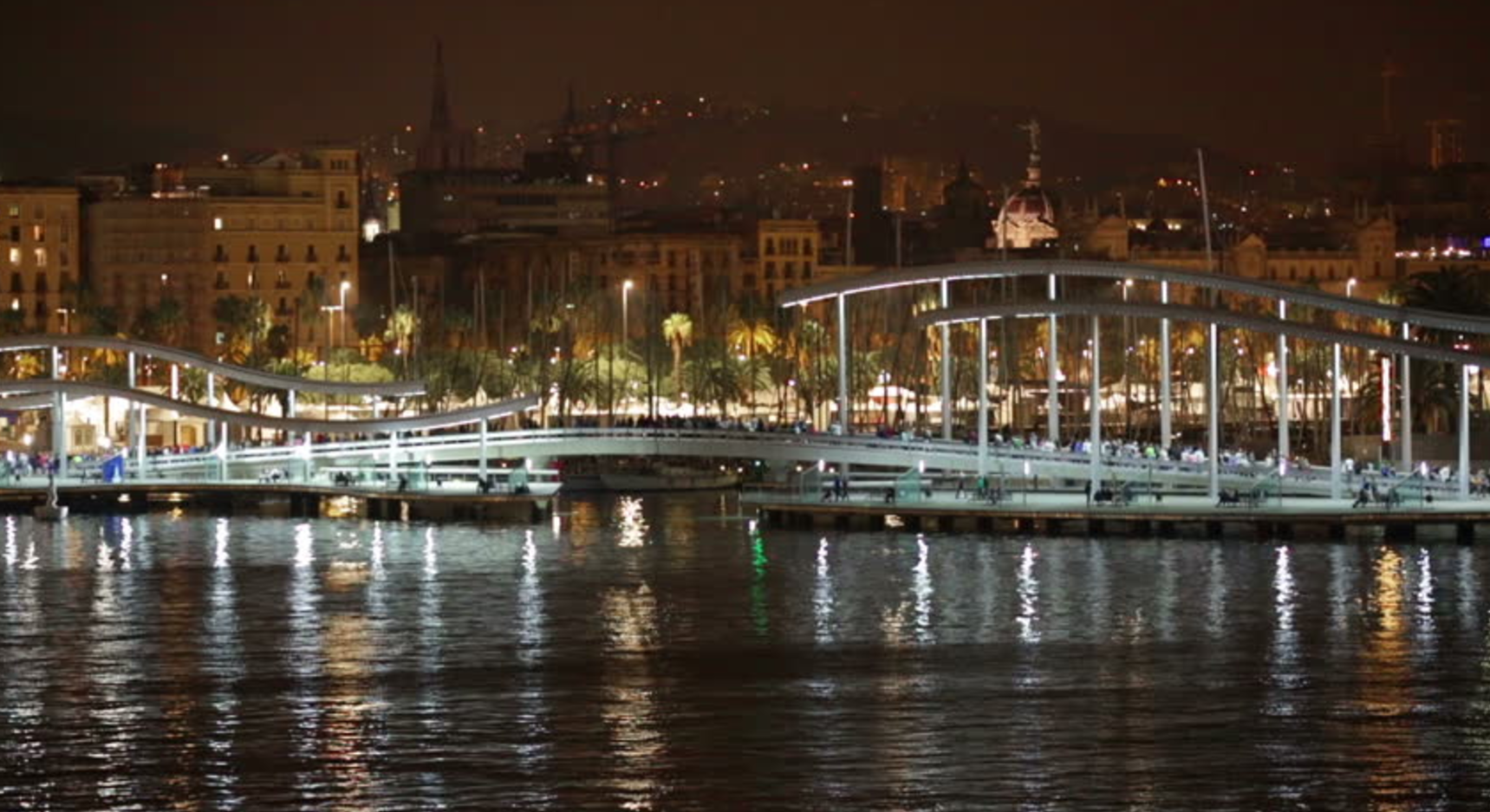
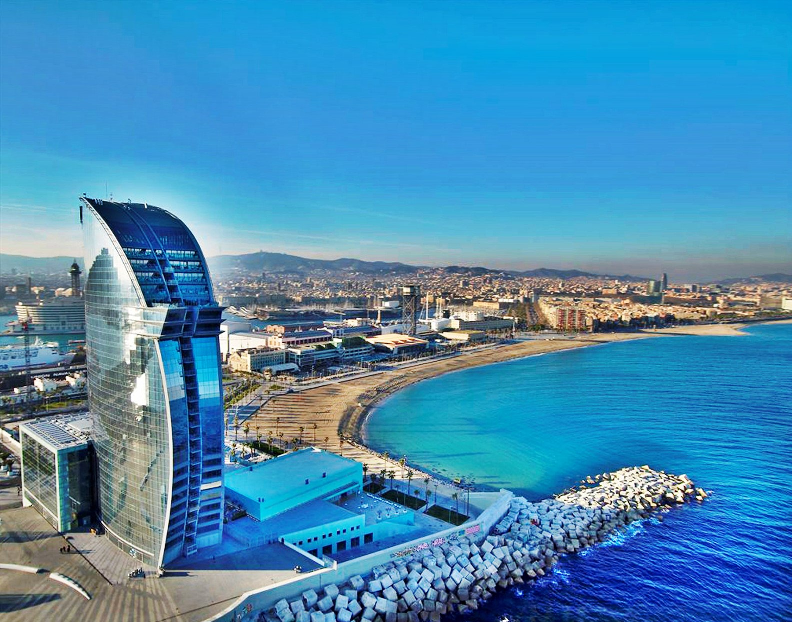
On the shores of the Gulf of La Plata in Buenos Aires is the area of Puerto Madero . Its location determined the destination of the region: here in 1882, the Argentine government signed a contract with the entrepreneur Eduardo Madero to build a port. Construction began in 1887 and was completed in 1897. It was a costly project that became one of the most important engineering achievements of its time. But, unfortunately, the emergence of larger cargo ships led to the obsolescence of the port 10 years after the completion of construction.
In Buenos Aires in 1926, built a new port. The port in the gulf became redundant and continued to function as an auxiliary facility. The area around the port occupied warehouses and wastelands. Puerto Madero became one of the main criminogenic areas of the city, it remained either to demolish or radically rebuild. It is worth noting that the Puerto Madera region is geographically located in the very center of Buenos Aires.
In 1989, the National Government of Argentina and the Government of the Autonomous City of Buenos Aires invested in the “Old Puerto Madero Corporation” (“Corporación Antiguo Puerto Madero”). The city government determined the strategy of the urban development institute, and the territory of 170 hectares was transferred to its ownership. The end of the 1980s and the beginning of the 1990s was a very difficult time for Argentina: a default occurred, the GDP fell by 30% over several years. Under these conditions, the development institute attracted $ 2.5 billion in private investment and turned the depressed criminal area into a business and tourist center.
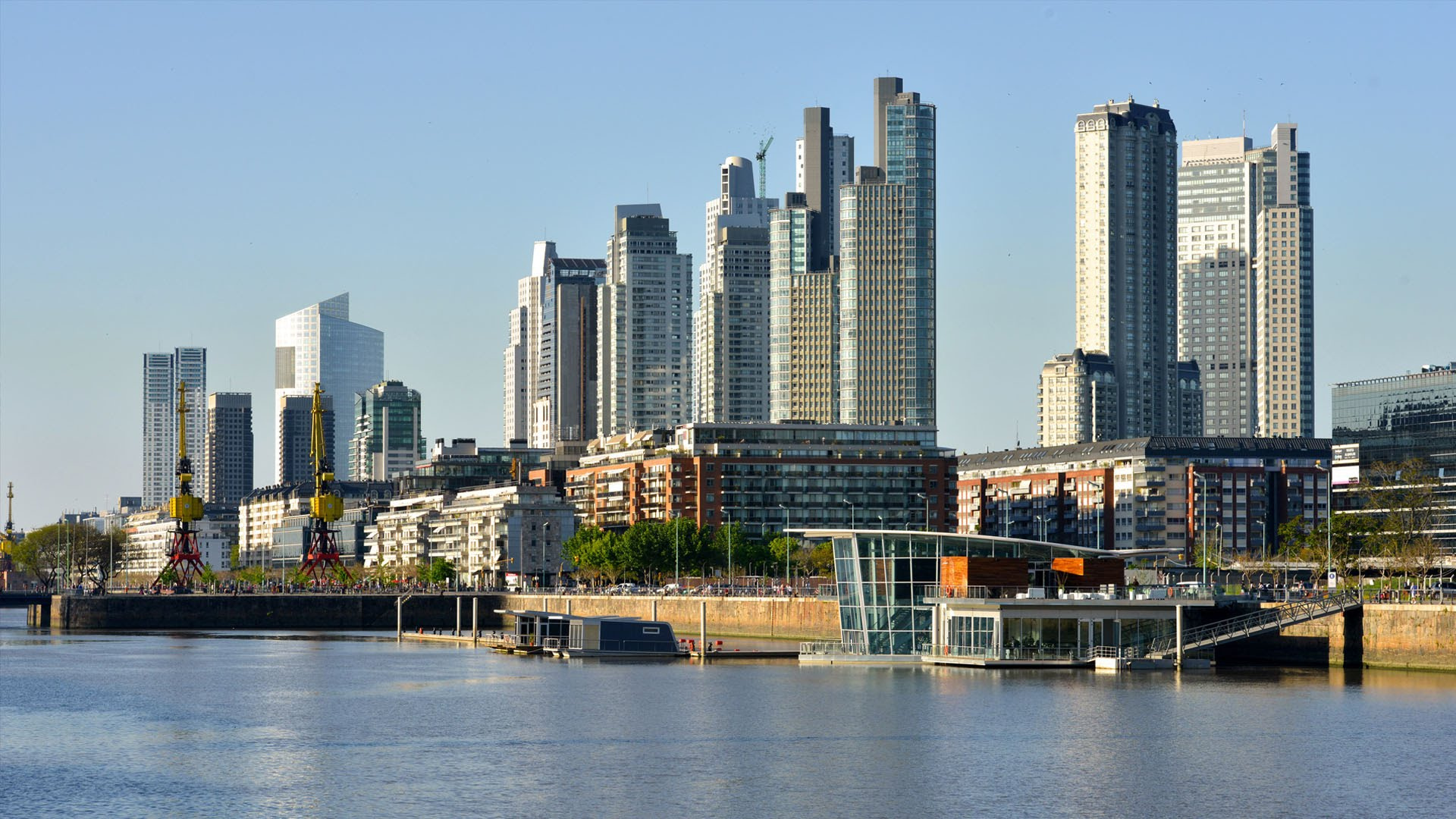
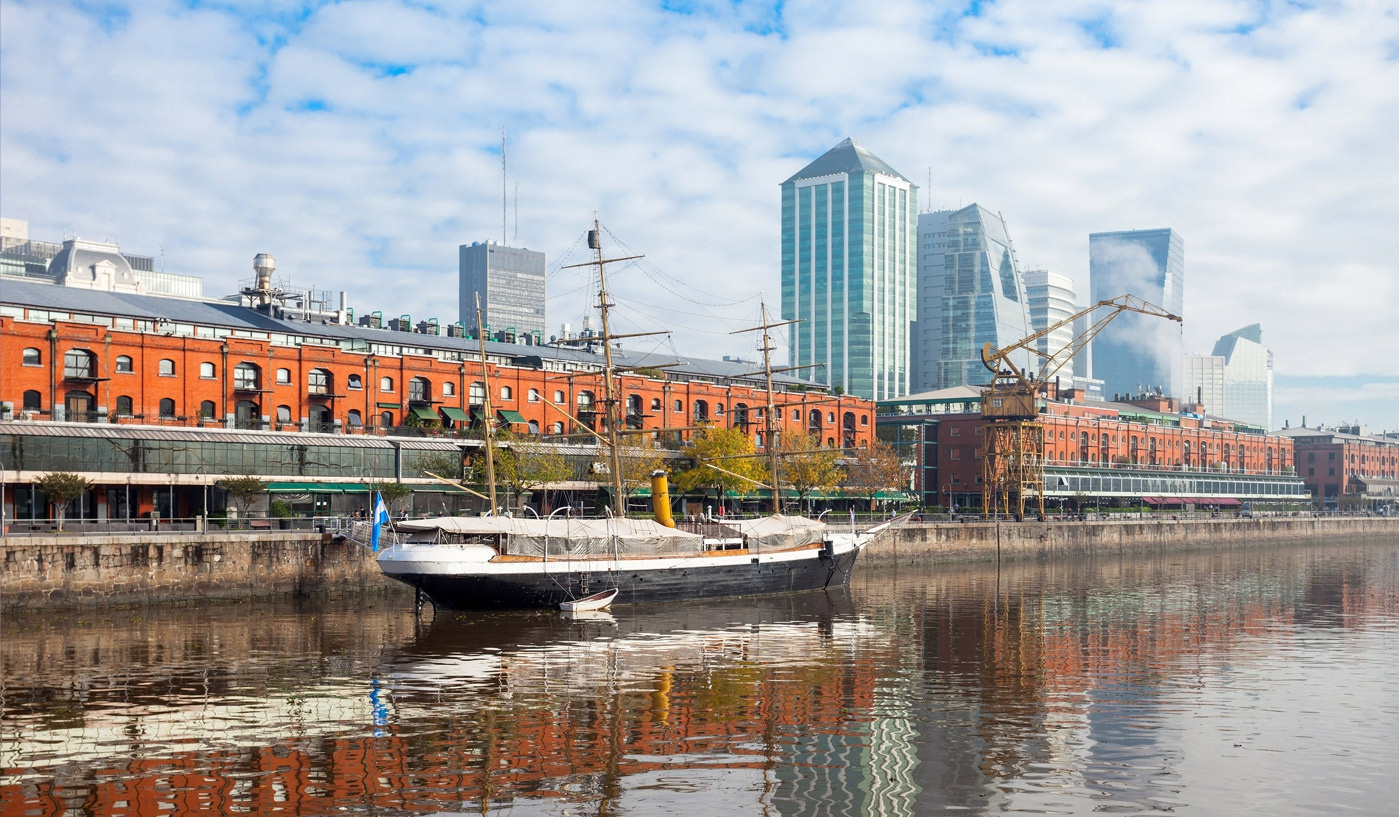
In 1965, a new administrative unit was formed from London and parts of other nearby counties - Greater London. Today there are two development institutes in Greater London, one of which is a special London Legacy Development Corporation. She is engaged in the development of the Olympic Park and adjacent territories.
In the course of work, London Legacy Development Corporation managed to attract external investments and balance various types of real estate, while preserving the cultural component.
It should be noted why, in principle, the city needed this corporation. In London, authority and financial resources are not concentrated in the hands of the central government. They are divided between district-level administrative units - the “ boro ” (London borough). To manage a project on the territory of several boroughs, a structure is needed at the same time that coordinates the activities of these units and is engaged in attracting external funds. In this case, the area of 480 hectares covered parts of four boro. The annual budget of the project is 127 million pounds - about 170 million US dollars.
The Greater London Administration invested 80% of the funds into the development institute, the corporation’s own funds accounted for 10%, and private investors added another 10%. The purpose of the development institute was to build the Olympic Park and ensure its continued operation - so that it does not turn into an abandoned territory, which sometimes happens with such objects.
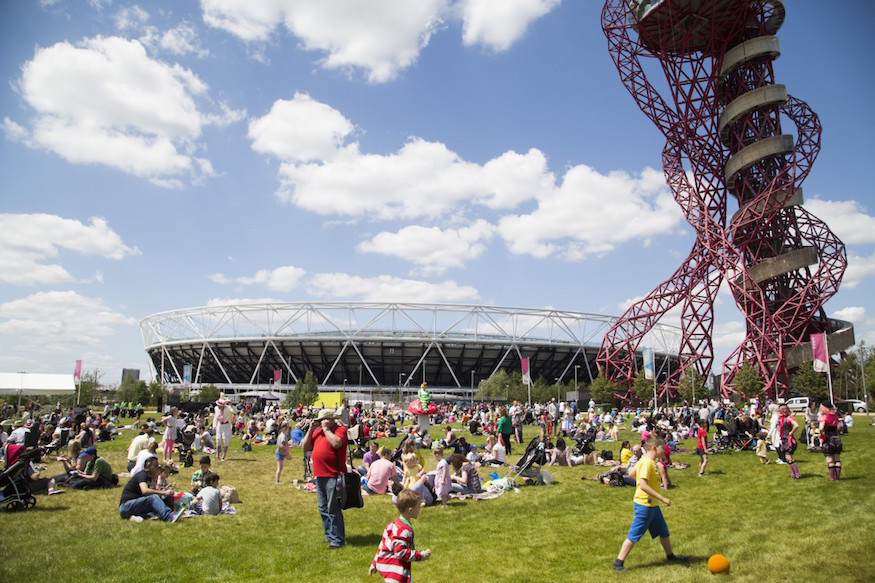

In 1995, Beijing Capital Group was established in Beijing to coordinate the activities of 170 state unitary enterprises. The main goal was to create a management company that could increase the efficiency of SUEs and attract third-party investments in them. Indeed, it is one thing to grind out details at the factory, it is quite another to sell them, and already the third one is to attract investments for new developments and expansion of production.
The Development Institute works in four directions:
Each of the key areas is allocated to a separate business. Beijing Capital Co., which is listed on the Shanghai Stock Exchange, is responsible for the environment, and Beijing Subway is responsible for the transportation component.
Since 2003, assets of Beijing Capital Group have grown 30 times - from 1.3 billion US dollars in 2013 to 30 billion in 2015. Among the sources of attracting investment are bonds, loans from other development institutions, IPO subsidiaries, sales of shares in companies large investment funds. In 2015, the group placed bonds for $ 600 million, attracted a loan from the Asian Development Bank for 300 million, held an IPO of a subsidiary of Beijing Capital Land for 122 million, and sold a stake in another subsidiary company, developer Capital Juda, to the US KKR fund for $ 191 million. .
This development institution now plays a dominant role in the development of Beijing’s infrastructure, as well as developing the Beijing-Tianjin-Hebei region as a whole.
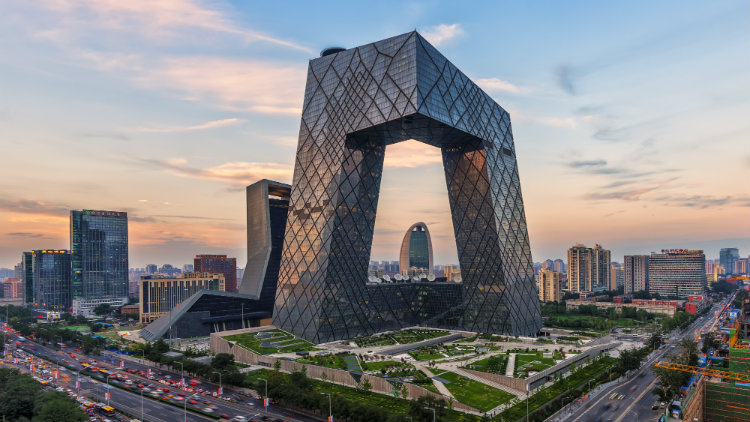
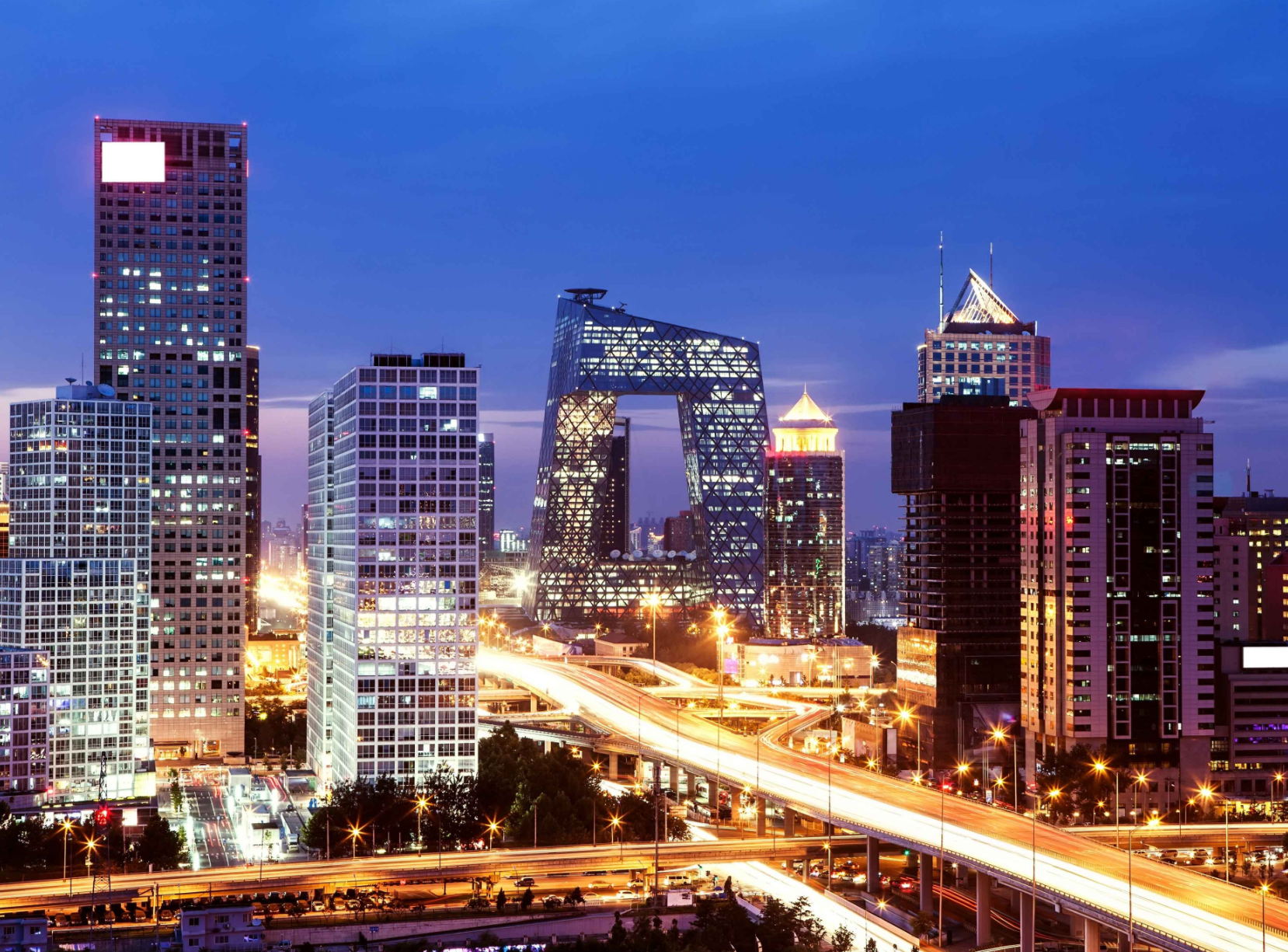
In 1980, Shenzhen was a small village. Today it is a special economic zone, an agglomeration with a population of 11 million people, growing every year by 9% of GDP, which is now about 300 billion dollars. But the most interesting is that half of all patents of all China are registered here. The development of the region is engaged in China Development Institute .
With the development institute in China, 11 free trade zones were opened. The mission of these zones is to create experimental sites and territories for development centers for the Asia-Pacific region, and at the same time they should become international trade hubs. Each of the zones can specialize in specific services - financial, logistics, information.
At the national and local levels, the development institute:
In fact, the development institute makes it as convenient as possible to conduct business in the free trade zones. This concerns not only the workflow, but also the development and redevelopment of territories, the mechanism for the distribution of land and the legislative framework, including intellectual property rights and their protection.
Near Shenzhen is Foxconn, where Apple, Microsoft, Sony and many other large companies collect products. Recently, the factory replaced 90% of employees with robots and received a performance increase of 250% .
And now in numbers: 120,000 organizations were registered in 2016 in the Qianhai & Shekou special trade zone located in Shenzhen, about 50,000 started a business, 170 of them were invested and created by companies from the Global 500 list. Foreign investment reached 50 billion US dollars - increased by 80% compared to 2015.

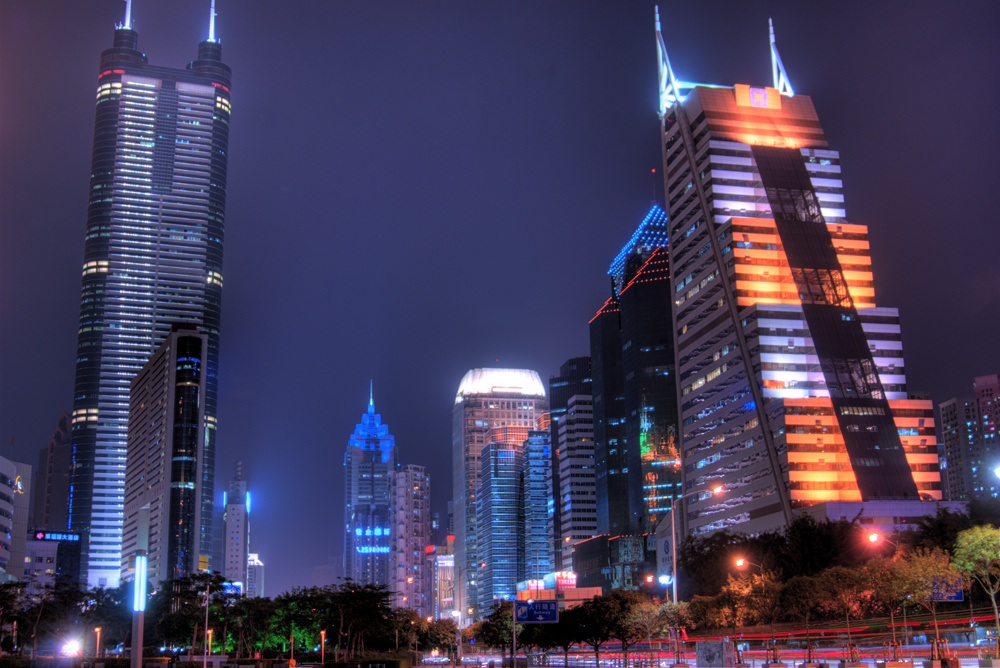
Some examples of redevelopment were concentrated around the “rusty belts”. Factories, factories, ports left over from industrialization increase the area of the city. Uncontrolled building of these zones by warehouses, markets, the appearance of slums leads to the creation of criminogenic areas, wastelands, and reduces the efficiency of logistics. Simply put, it is difficult for people who live here to get to work in another part of the city. The way to solve these problems is to create a new concept and a radical restructuring of the regions.
In this case, development institutions are an effective tool. Specially created organizations accumulate expertise and competencies necessary to develop development plans and translate them into reality, as well as attract investment for these works.
To be continued: in the next article we will talk more about other examples of “rust belts” in Russia and the world and about the fight against this factor.
Let's look at the stages of the evolution of cities and several redevelopment cases involving development institutions.

Shenzhen, China
Let's start with the theoretical component: the evolution of cities. Cities today account for 80% of gross domestic product. One of the reasons is lower transaction costs. That is, in the cities there are lower costs, which are not related to the production of products directly, but to the indirect costs associated with this production for collecting and searching all the information necessary for the activity, entering into various transactions, contracts, contracts, etc. The second important component of the "success" of cities: concentration of better human capital. Cities are the drivers of the global economy.
Cities go through certain stages of evolution:
- City 1.0 is rather an industrial city in which industry is developed, large enterprises are located.
- Cities 2.0 - the city moves to a greater extent to the services sector, the development of small medium-sized businesses.
- City 3.0 is a post-industrial city that is a center of education, a center of technology, a center of knowledge.
 City 1.0 is a city-mechanism, which was perceived as a tool for living and working people. According to this principle, in the first half of the 20th century, French architect Le Corbusier offered to work with him. In its concepts of reconstruction of Paris, Moscow and other cities, it was based on the following structure: in the center of the city there are high (60 floors) office buildings; they are surrounded by parks and residential buildings. In 1930, he proposed a new concept for the Radiant City, in which he allocated separate spaces for the heavy industry zone, warehouses, light industry, park, residential, transport, business and others.
City 1.0 is a city-mechanism, which was perceived as a tool for living and working people. According to this principle, in the first half of the 20th century, French architect Le Corbusier offered to work with him. In its concepts of reconstruction of Paris, Moscow and other cities, it was based on the following structure: in the center of the city there are high (60 floors) office buildings; they are surrounded by parks and residential buildings. In 1930, he proposed a new concept for the Radiant City, in which he allocated separate spaces for the heavy industry zone, warehouses, light industry, park, residential, transport, business and others.
 Industrialization logically led to the deterioration of the ecological status of all large cities. There were activists who wanted to change the emerging state of affairs. One of them was the Canadian-American writer, urban planning theorist and one of the founders of the new urbanism movement, Jane Jacobs . In the book The Death and Life of Large American Cities (1961), she described the basic principles of the economic functioning of cities and introduced the principle of urban import substitution. She formulated arguments against urban planning, guided by abstract ideas. The city can not ignore the daily lives of its inhabitants, it must be alive, diverse. It should be based on spontaneous order and various mechanisms of self-regulation. This concept of the city can be called "humanistic" and attributed to the City 2.0.
Industrialization logically led to the deterioration of the ecological status of all large cities. There were activists who wanted to change the emerging state of affairs. One of them was the Canadian-American writer, urban planning theorist and one of the founders of the new urbanism movement, Jane Jacobs . In the book The Death and Life of Large American Cities (1961), she described the basic principles of the economic functioning of cities and introduced the principle of urban import substitution. She formulated arguments against urban planning, guided by abstract ideas. The city can not ignore the daily lives of its inhabitants, it must be alive, diverse. It should be based on spontaneous order and various mechanisms of self-regulation. This concept of the city can be called "humanistic" and attributed to the City 2.0.
The next stage in the evolution of the city is City 3.0. We are talking about a developed civic initiative, global education, multiculturalism, international communication. The city becomes the center of knowledge and technology, and the role of industry in it is declining. For example, in London only 2% of the gross regional product is occupied by industry. Financial markets and the knowledge economy are coming to the fore.
Is it possible to go straight to the third stage, jumping over the second or even the first? How can you turn a small village into an agglomeration with a population of 10 million people? What organizations are needed to develop cities?
Let us dwell on the concept of " redevelopment ": this is one of the most effective ways of reprofiling (reassigning) unclaimed real estate objects or irrationally used territories. Redevelopment of cities and other territories may occur in different ways. It is possible to create centers of industry, museum clusters, business, tourism, transport, event and educational clusters.
Barcelona, Spain)
At the end of the 20th century, the coastal area of the southern part of the Spanish city of Barcelona was occupied by the railway line, the industrial zone and the old fish market. In the XIX century, this area was the epicenter of the industrial revolution. Today, these areas are called "rusty belt." Due to industrial facilities that may no longer function, the area of cities increases, the efficiency of transport infrastructure decreases.
The money for the coastal reconstruction project, launched in 1990, was issued by the private-public corporation Nova Icaria Societat Anonima. At the first stage, investments amounted to 1.1 billion euros. Of these, 40% were provided by a municipal development company, 40% were invested by private development companies, and 20% by banks.
The result was 18 hectares of beaches with a total length of 4 kilometers, 50 hectares of parks, a walking boulevard 30 meters wide, 700 yacht marinas, two multifunctional towers 100 meters high and 2,000 apartments, as well as clubs, restaurants, cafes and hotels.


Buenos Aires, Argentina)
On the shores of the Gulf of La Plata in Buenos Aires is the area of Puerto Madero . Its location determined the destination of the region: here in 1882, the Argentine government signed a contract with the entrepreneur Eduardo Madero to build a port. Construction began in 1887 and was completed in 1897. It was a costly project that became one of the most important engineering achievements of its time. But, unfortunately, the emergence of larger cargo ships led to the obsolescence of the port 10 years after the completion of construction.
In Buenos Aires in 1926, built a new port. The port in the gulf became redundant and continued to function as an auxiliary facility. The area around the port occupied warehouses and wastelands. Puerto Madero became one of the main criminogenic areas of the city, it remained either to demolish or radically rebuild. It is worth noting that the Puerto Madera region is geographically located in the very center of Buenos Aires.
In 1989, the National Government of Argentina and the Government of the Autonomous City of Buenos Aires invested in the “Old Puerto Madero Corporation” (“Corporación Antiguo Puerto Madero”). The city government determined the strategy of the urban development institute, and the territory of 170 hectares was transferred to its ownership. The end of the 1980s and the beginning of the 1990s was a very difficult time for Argentina: a default occurred, the GDP fell by 30% over several years. Under these conditions, the development institute attracted $ 2.5 billion in private investment and turned the depressed criminal area into a business and tourist center.


Greater London (UK)
In 1965, a new administrative unit was formed from London and parts of other nearby counties - Greater London. Today there are two development institutes in Greater London, one of which is a special London Legacy Development Corporation. She is engaged in the development of the Olympic Park and adjacent territories.
In the course of work, London Legacy Development Corporation managed to attract external investments and balance various types of real estate, while preserving the cultural component.
It should be noted why, in principle, the city needed this corporation. In London, authority and financial resources are not concentrated in the hands of the central government. They are divided between district-level administrative units - the “ boro ” (London borough). To manage a project on the territory of several boroughs, a structure is needed at the same time that coordinates the activities of these units and is engaged in attracting external funds. In this case, the area of 480 hectares covered parts of four boro. The annual budget of the project is 127 million pounds - about 170 million US dollars.
The Greater London Administration invested 80% of the funds into the development institute, the corporation’s own funds accounted for 10%, and private investors added another 10%. The purpose of the development institute was to build the Olympic Park and ensure its continued operation - so that it does not turn into an abandoned territory, which sometimes happens with such objects.


Beijing, China)
In 1995, Beijing Capital Group was established in Beijing to coordinate the activities of 170 state unitary enterprises. The main goal was to create a management company that could increase the efficiency of SUEs and attract third-party investments in them. Indeed, it is one thing to grind out details at the factory, it is quite another to sell them, and already the third one is to attract investments for new developments and expansion of production.
The Development Institute works in four directions:
- Environmental protection, including work with water, solid waste, air pollution, development of protection technologies.
- Infrastructure, including roads, railway and underground transport lines.
- Real estate, construction and sale.
- Financial services, funds.
Each of the key areas is allocated to a separate business. Beijing Capital Co., which is listed on the Shanghai Stock Exchange, is responsible for the environment, and Beijing Subway is responsible for the transportation component.
Since 2003, assets of Beijing Capital Group have grown 30 times - from 1.3 billion US dollars in 2013 to 30 billion in 2015. Among the sources of attracting investment are bonds, loans from other development institutions, IPO subsidiaries, sales of shares in companies large investment funds. In 2015, the group placed bonds for $ 600 million, attracted a loan from the Asian Development Bank for 300 million, held an IPO of a subsidiary of Beijing Capital Land for 122 million, and sold a stake in another subsidiary company, developer Capital Juda, to the US KKR fund for $ 191 million. .
This development institution now plays a dominant role in the development of Beijing’s infrastructure, as well as developing the Beijing-Tianjin-Hebei region as a whole.


Shenzhen (China)
In 1980, Shenzhen was a small village. Today it is a special economic zone, an agglomeration with a population of 11 million people, growing every year by 9% of GDP, which is now about 300 billion dollars. But the most interesting is that half of all patents of all China are registered here. The development of the region is engaged in China Development Institute .
With the development institute in China, 11 free trade zones were opened. The mission of these zones is to create experimental sites and territories for development centers for the Asia-Pacific region, and at the same time they should become international trade hubs. Each of the zones can specialize in specific services - financial, logistics, information.
At the national and local levels, the development institute:
- Implements its own registration system.
- Develops policies and regulations for financial and tax services.
- Performs administrative reforms at the local level to provide services on the principle of one-window and use of intellectual services for the collection and accounting of taxes and other payments.
In fact, the development institute makes it as convenient as possible to conduct business in the free trade zones. This concerns not only the workflow, but also the development and redevelopment of territories, the mechanism for the distribution of land and the legislative framework, including intellectual property rights and their protection.
Near Shenzhen is Foxconn, where Apple, Microsoft, Sony and many other large companies collect products. Recently, the factory replaced 90% of employees with robots and received a performance increase of 250% .
And now in numbers: 120,000 organizations were registered in 2016 in the Qianhai & Shekou special trade zone located in Shenzhen, about 50,000 started a business, 170 of them were invested and created by companies from the Global 500 list. Foreign investment reached 50 billion US dollars - increased by 80% compared to 2015.


"Rusty Belt"
Some examples of redevelopment were concentrated around the “rusty belts”. Factories, factories, ports left over from industrialization increase the area of the city. Uncontrolled building of these zones by warehouses, markets, the appearance of slums leads to the creation of criminogenic areas, wastelands, and reduces the efficiency of logistics. Simply put, it is difficult for people who live here to get to work in another part of the city. The way to solve these problems is to create a new concept and a radical restructuring of the regions.
In this case, development institutions are an effective tool. Specially created organizations accumulate expertise and competencies necessary to develop development plans and translate them into reality, as well as attract investment for these works.
To be continued: in the next article we will talk more about other examples of “rust belts” in Russia and the world and about the fight against this factor.
All Articles